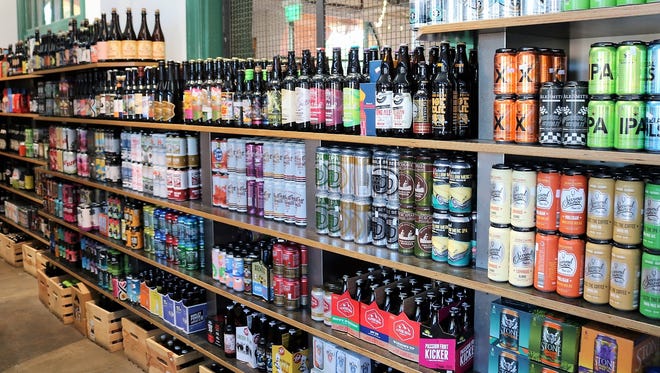Russo: Cloudy with a chance of beer

Beers are getting harder and harder to see through, in case you hadn’t noticed.
And increasingly they’re served in fun colors from deep red and purple to a color that could best be described as Sunny Delight orange. It seems to all have happened very quickly, but really the rise of oddly-colored and opaque ales is a natural step in the massive re-imagining that is the independent craft beer revolution.
More:Russo: Beer trends on the rise and fall in 2018
For decades, crisp, clear and golden were beer’s primary descriptors. Along with “ice cold,” these words made up most of our understanding about what beer should be. Of course, the way many of us think about beer has changed a lot in the last decade. In restaurants and breweries today, beers that meet commercial standards of the 1980s are becoming a minority.
Beer diversity is one of the main reasons. More people aren’t just open to more beers, but lots of them expect a selection beyond the beer basics at even chain restaurants. The other reason, though, is the destruction of the norms that governed American brewing for most of the 20th century. Particularly the erosion of lager beers’ dominance.
“Clear, crisp and golden” describes most lager beers. Lagers are brewed in a particular way that includes having them ferment for a longer time at lower temperatures than ales. When they finish fermenting and come to rest, yeast, hop and other particles settle to the bottom. Ales, which often are the go to for craft breweries, don’t have to be at rest as long and sometimes have particles in them.

Particles in craft beers were filtered out (and still are in some breweries) for a couple of reasons.
First, “clarity” is a category in beer competitions. Being able to make a good beer that also is clear takes more than a little technical expertise, and having awards are valuable both for morale and marketing purposes.
Lots of places that don’t filter their beer still will remove particles by whirlpooling the beer and leaving the dregs behind to make their beer mostly clear.
Second, as independent craft beer took off, it already was a lot to ask people to drink ales that had more flavor and complexity than they were used to. Letting it look cloudy or having little swimmers throughout would have challenged people’s sense of sight while it also challenged their senses of taste and smell. It was just a bridge too far in the nascent craft beer industry.
That is, until a bridge too far became kind of the point of craft beer.
More:Russo: Why not try a beer with your next beer? It's the fun of blending
Once breaking open flavor norms became the industry standard, brewers increasingly were emboldened to try new approaches to brewing. It precipitated the rise of everything from making highly-hopped ales to super-sweet stouts. Once drinkers became OK with lots of different flavors, brewers started pushing the envelope on color and appearance.
Over the last few years “cloudy” beers grew in popularity. The rise of wheat beers (and sour Berliner Weisses) as well as some Belgian beers paved the way for the explosion of juicy, hazy New England IPAs that became all the rage last year.
From there, the gloves were off for brewers who were playing with even more ingredients and processes that affected the color and the clarity of their beers.
Whether there was a taste revolution is a matter of debate.
On the face of it, a beer with extra particles of yeast, hops and protein floating in it ought to taste different than one that doesn’t. Realistically, the differences often are too subtle to matter to regular beer drinkers, and whether they improve or detract from the beer is a matter of contention among professional reviewers and tasters.
As with everything in beer, in the end it is simply a matter of taste and preference. That said, the reason New England IPAs (and the wheat beers for that matter) exploded into popularity is that people really like the way those beers taste. So much so that they were willing to look past the hazy or opaque attributes and the occasional dregs at the bottom the glass.
Opaque beers, especially when they are interesting colors do have a novel, futuristic air about them. They’re really just one more opportunity for people who haven’t found a craft beer they love to try more styles and flavors.
If you wait around long enough, someone will make your next favorite beer, and that’s really one of the most exciting parts about the way independent craft has blown open our beer expectations. There always is something new to try.
More:Sweeping craft beer rule changes sought by Maryland comptroller